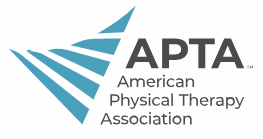Student Physical Therapist Delivery of Pain Neuroscience Education: A Feasibility Case Study Report
Student Physical Therapist Delivery of Pain Neuroscience Education: A Feasibility Case Study Report
Purpose: The purpose of our study was to investigate unique parameters of delivery of a pain neuroscience education (PNE) program. Specifically, our goals were: 1- to assess the feasibility of delivering brief PNE 2- to assess whether a Student Physical Therapist (SPT) can effectively deliver PNE; and 3- to assess whether physical therapy with the addition of 90 minutes of PNE creates a clinically significant improvement in pain, maladaptive beliefs, and disability for a patient with chronic low back pain (CLBP).
Background/Significance:
Recent clinical practice guidelines for treatment of CLBP recommend that treatment include “high-quality education†in addition to exercise-based therapies and suggest that education should encourage self-management and early return to work and activity1,2,5,11,12,13,15. One type of education, PNE, has been demonstrated to be effective as part of exercise-based physical therapy treatment for CLBP3,6,7,8,10,14. However, there are few studies utilizing educational parameters that may maximize its effective dissemination within a physical therapy clinical setting (e.g., delivery in brief sessions (< 3 hours) by clinicians who are non-experts in pain science).
Subjects:
The subject was a 44-year-old male with CLBP.
Methods and Materials:
One subject participated in three 30-minute (90 minutes total) PNE sessions delivered by a SPT. The participant was also undergoing customary physical therapy care. Pain intensity (Numeric Rating Scale: NRS), pain catastrophizing (Pain Catastrophizing Scale: PCS), fear avoidance beliefs (Fear Avoidance Belief Questionnaire: FABQ), disability related to back pain (Oswestry Disability Index: ODI), and knowledge of pain neuroscience (Neurophysiology of Pain Questionnaire- Revised: NPQ-R) were assessed with surveys completed before the first and after the last education sessions.
Analyses:
Pre and post treatment outcomes were compared to see if changes met “minimal clinically important differences†(MCIDs). The feasibility of delivering PNE was also assessed with a qualitative questionnaire filled out by the supervising physical therapist.
Results:
Knowledge of pain neuroscience improved from pre to post-intervention (25% to 75% score on NPQ-R). Meaningful change in knowledge was based on the predetermined cutoff of 50% as a threshold of “pain neuroscience knowledge†according to prior research showing a non-overlapping distribution of scores below and above 50% for pre and post-education tests of pain knowledge on the NPQ9.However, no clinically important change was found in pain intensity (NRS), pain catastrophizing (PCS), fear avoidance beliefs (FABQ), or disability related to back pain (ODI) as based on prior proposed MCIDs and cutoffs4,16,17,18.
Conclusions:
Results suggest that brief sessions of PNE, delivered by a non-expert, may increase knowledge of pain neuroscience in patients with CLBP; though it may not improve pain, maladaptive beliefs, or disability. These findings are encouraging given productivity demands present in a standard outpatient physical therapy setting. This type of education delivery may help to reduce barriers to including education in physical therapy for CLBP.



